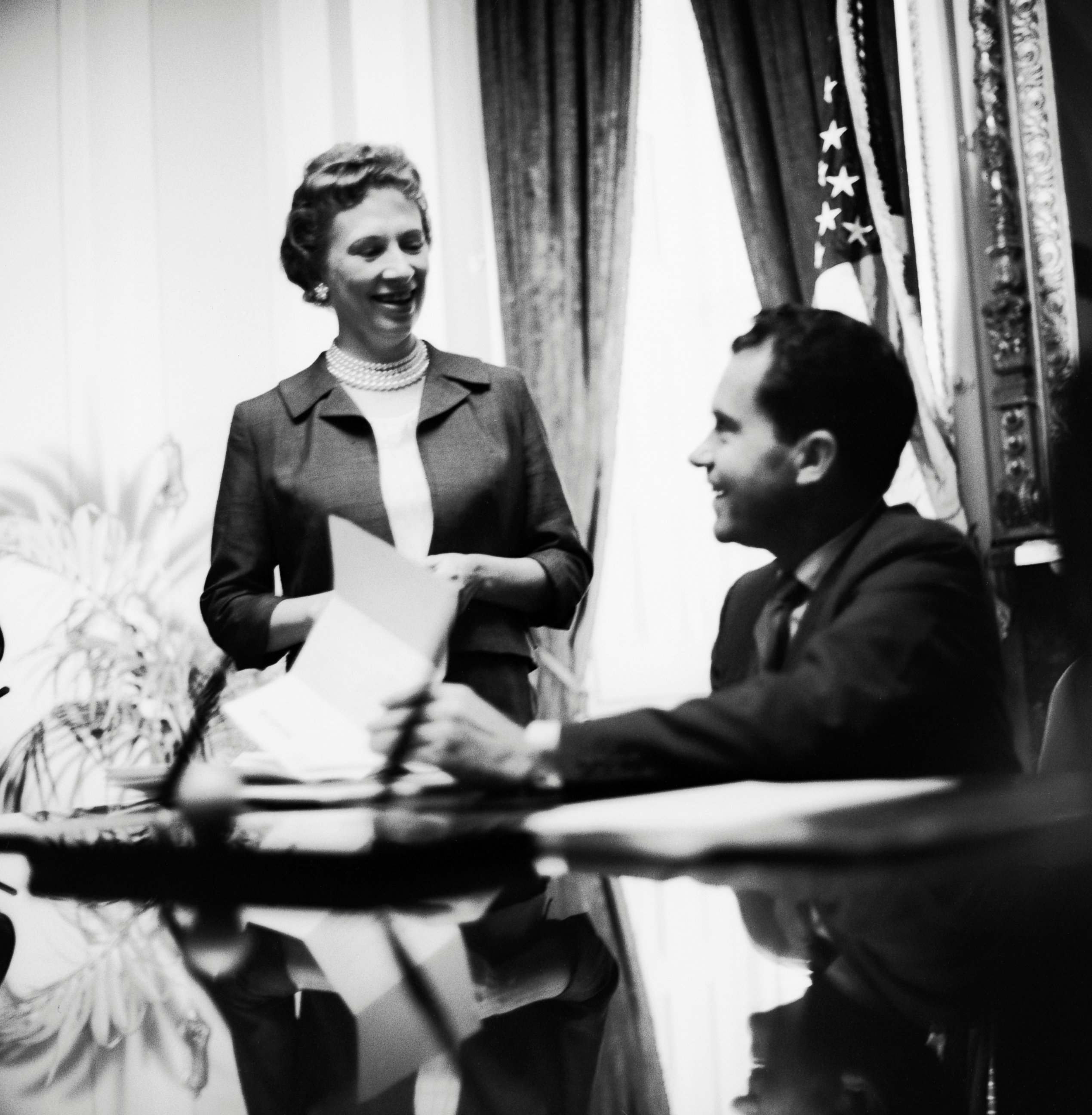The Watergate tapes' infamous 18.5-minute gap and Nixon's secretary's unusual explanation for it
Rose Mary Woods testified she recorded over some of the tape by mistake.
— -- When the existence of the Watergate tapes became public during the investigations into the 1970’s scandal, one of the most memorable moments was the discovery of the infamous 18.5-minute gap and what some saw as President Richard Nixon’s secretary’s bizarre explanation for what caused it.
“The whole history of Watergate is a Marx Brothers routine,” said Jill Wine-Banks, an assistant Watergate special prosecutor. “You have a ridiculous break-in with so many errors that they got caught red-handed and … it is absurd, and yet facts are facts.”

The prosecution was interested in tapes of a discussion between Nixon and his chief of staff, H.R. "Bob" Haldeman, that were captured by the president's secret White House recording system in the days immediately following the break-in at Democratic National Committee headquarters.
But those tapes contain a mysterious 18.5-minute gap -- a patch of buzzes and clicks of missing audio -- in the middle of a recording made June 20, 1972, three days after the break-in.
Rose Mary Woods, Nixon’s loyal private secretary, was tasked with transcribing the tapes before they were turned over to prosecutors. Woods testified in front of a federal grand jury in 1974 that she was using a dictaphone, which had a pedal that would pause the recording when she lifted her foot off it, and she claimed she had erased part of the tape by mistake.
“Her explanation was that she was listening to the tape and … the telephone rang,” said Wine-Banks. “So she kept her foot on a pedal, pushed the wrong button. She pushed record instead of off and reached for the phone.”
Woods testified that when she accidentally pushed record on the dictaphone, it recorded over part of the original conversation. There’s a famous photo of Woods re-creating the moment, in which Woods attempted to keep her foot on the dictaphone pedal and reach for the phone on the other side of her desk at the same time. Some have jokingly referred to it as the “Rose Mary Stretch.”
“In the picture, you can see her holding on, white-knuckled, to the chair so that she can reach and she’s reclining … to reach the phone,” Wine-Banks said. “She’s almost at a 45-degree angle.”
During her testimony, Woods claimed she may have caused a 4- or 5-minute gap in the tape, but nothing more. A panel set up in the 1970s by federal Judge John Sirica, who presided over the Watergate criminal trials, concluded the erasures were done in at least five separate and contiguous segments.
The audio wasn’t able to be recovered during the trials. Over the years, as new technology became available, efforts have been made to try to electronically recover the lost audio but it remains a mystery.
After Woods left the federal government in 1976, she moved back to her home state of Ohio and lived as a private citizen, according to her obituary. She died in 2005 at age 87.




